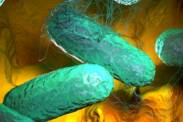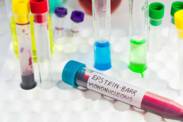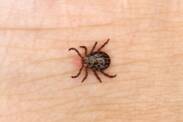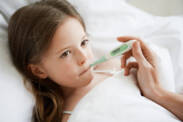Infections, diseases, ticks

Mastitis, or Mammary Gland Inflammation: Causes, Symptoms, Treatment
Inflammation of the breast is manifested by a painful and uncomfortable sensation in the breast. It most commonly affects breastfeeding women, but can also occur in non-breastfeeding women and men of any age. It is often caused by an infection that develops in the breast tissue.

Rubella: Why does it occur and what are the symptoms?
Rubella is an infectious viral disease. It manifests itself as a skin rash to seeding all over the body. Nowadays, thanks to regular vaccination, this disease is relatively rare.

What is diphtheria? Causes, symptoms and vaccination
Diphtheria is an acute infectious disease primarily affecting the upper respiratory tract. It is a worldwide disease, but its incidence has been significantly reduced by vaccination. Why does diphtheria occur and how does it manifest itself? What is the current situation worldwide?

Urethral pain: Causes of burning and Itching
This symptom most often accompanies inflammation of the urinary tract. In addition to common inflammations, it also occurs in a group of sexually transmitted diseases. Pain in the urethra is also present in cases of urinary stones and cancer.

Painful urination: Causes, Symptoms, Treatment
It is a symptom of inflammation. In women, inflammation is more common, mainly because of the shorter urethra and its location. Dehydration or concentrated urine can also be a cause. Sometimes a sexually transmitted disease is behind this pain. In any case, if it persists, an examination is advisable.

What does an elevated body temperature signal? The most common causes
Body temperature can indicate chronic fatigue syndrome, but also common colds or flu. Any viral or bacterial respiratory disease. It is also present in inflammation in various parts of the body. It indicates infectious diseases, but also many other problems. The temperature can also increase with hormonal changes during pregnancy.

Scars on the skin: what do they arise from + what are the treatment options?
Scars form as part of the healing process after skin damage. Most people will get a scar of some kind during their lifetime. It can be the result of an accident, surgery or a poorly healing skin condition.

Insect bites: Can they be fatal? What is first aid?
The summer months are ideal for an increased incidence of insects. They are annoying, constantly perching on everyone, bumping into faces, buzzing behind ears and some cyclists are literally fed up with them. Their bites or stings cause a rash at the site of the sting, redness, sometimes swelling or itching. The appearance of the bite depends on the type of insect with which the person has come into contact. In the case of hypersensitivity of some individuals, an allergic reaction or even anaphylaxis can occur. A special category is formed by so-called "carriers" of various diseases. These are mainly foreign insects, which become topical during the holiday and travel period.

Vaginal discharge and change in colour, smell or consistency = problem?
Vaginal discharge, or vaginal fluoride, is known to every woman. It appears in smaller amounts, with a typical white colour and no odour, on underwear every day.

Helicobacter pylori as an insidious enemy: How is it transmitted and manifested?
Helicobacter pylori is a bacterium with a worldwide distribution. How is it transmitted and what are the symptoms and treatment of this insidious infection? Why is it dangerous?

Escherichia coli: What infections does it cause and how is it treated? (E. coli)
Escherichia coli is a bacterium that is commonly found in the human gut.

Typhoid fever: What is typhoid and how does it manifest? Will vaccination help?
Typhoid fever is an infectious fever. It is also referred to as intestinal fever because it affects the small intestine. The infection only attacks humans. It occurs mainly in areas with low hygiene standards, in poor countries and in areas with a high concentration of population.

Tuberculous meningitis: what is it and what symptoms does it have?
Tuberculosis is an infectious disease. Even today it is a common cause of death, especially in the developing world. But it is also common in developed countries.

Arthrosis : How infectious or non-infectious arthritis, what are its symptoms?
Arthrosis is an inflammatory disease of the joints. It can be infectious or non-infectious. It has several forms and is divided into rheumatoid arthritis, septic arthritis, or DNA disease. Each type has different causes. However, their common feature is pain, swelling, limited function, and joint damage.

Whooping Cough: Causes, Symptoms, Treatment in Children and Adults
Whooping cough starts subtly and lasts a long time. It affects children and adults alike. What are its symptoms, treatment and consequences, and prevention?

Infectious Mononucleosis: Causes, Symptoms, Treatment
Infectious mononucleosis is a worldwide viral disease accompanied mainly by high fever, angina and enlarged lymph nodes. The virus is spread by interpersonal contact. The disease is mainly transmitted by saliva and is therefore also known as "kissing disease". What are the symptoms of infectious mononucleosis, available treatment options and prevention?

Tick-borne encephalitis: Symptoms, Prevention by vaccination
The tick is one of the carriers of infectious diseases. Tick-borne encephalitis is one of them. Over the past 10 years, the number of cases has ranged from 50 to 108 per year.

Vaginal Yeast Infection: Causes, Symptoms
Yeast infection of the vagina is a very common problem in women, caused by yeasts of the genus Candida, or microscopic fungi, which is manifested by unpleasant itching, burning and discharge from the vagina.

What is there to know about leptospirosis? Danger to humans and animals?
Leptospirosis is an infectious disease caused by bacteria that affects both humans and animals. The disease is transmitted from infected animal to human through urine. It is widespread throughout the world, especially in rural areas.

Rheumatic Fever Affects Children: Causes and Manifestations
Rheumatic fever is an acute multisystem inflammatory disease. It affects and damages connective tissues. It most often occurs in children of pre-school and school age. It occurs after recovery from a streptococcal infection of the upper respiratory tract and streptococcal angina.









